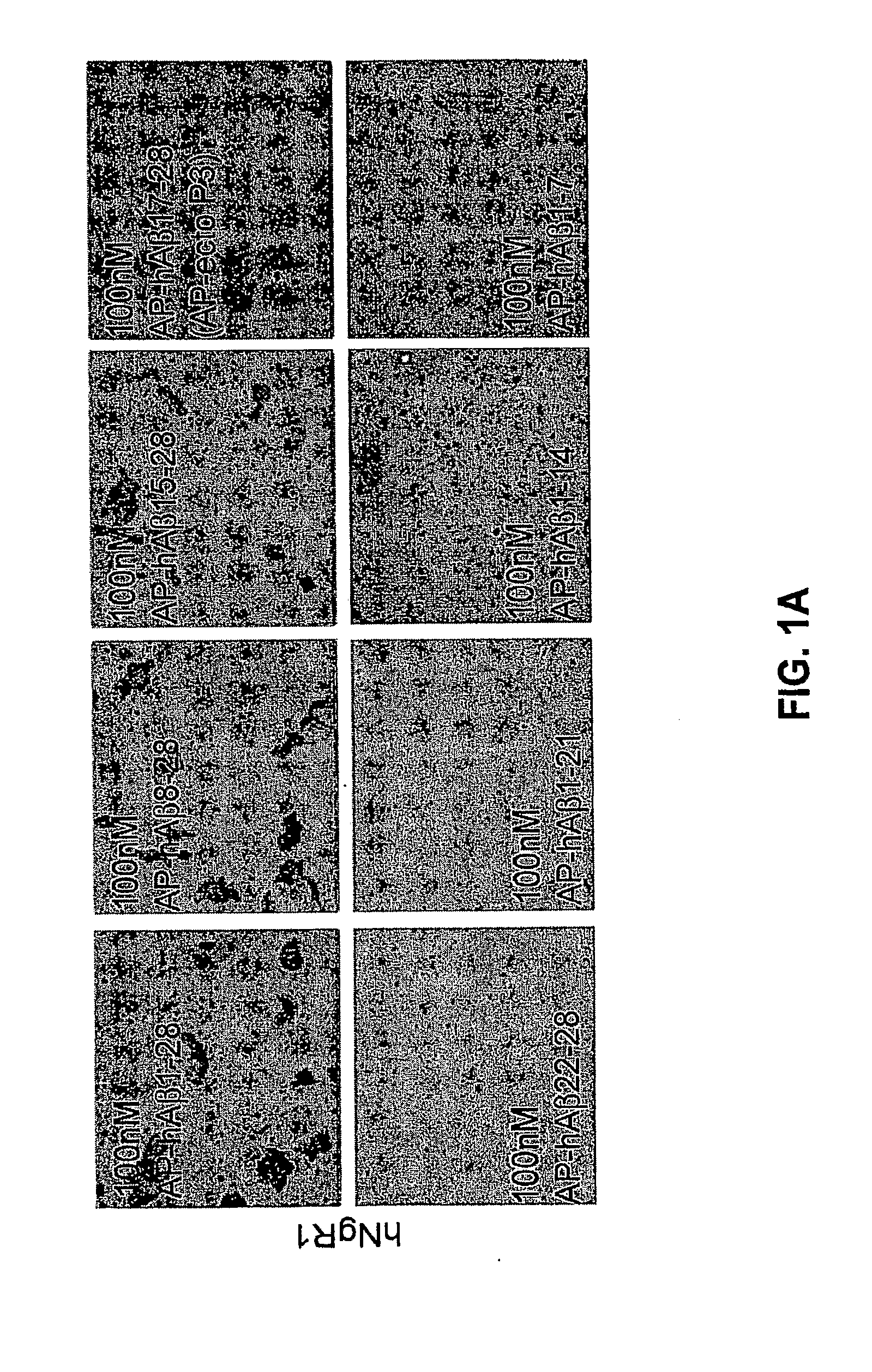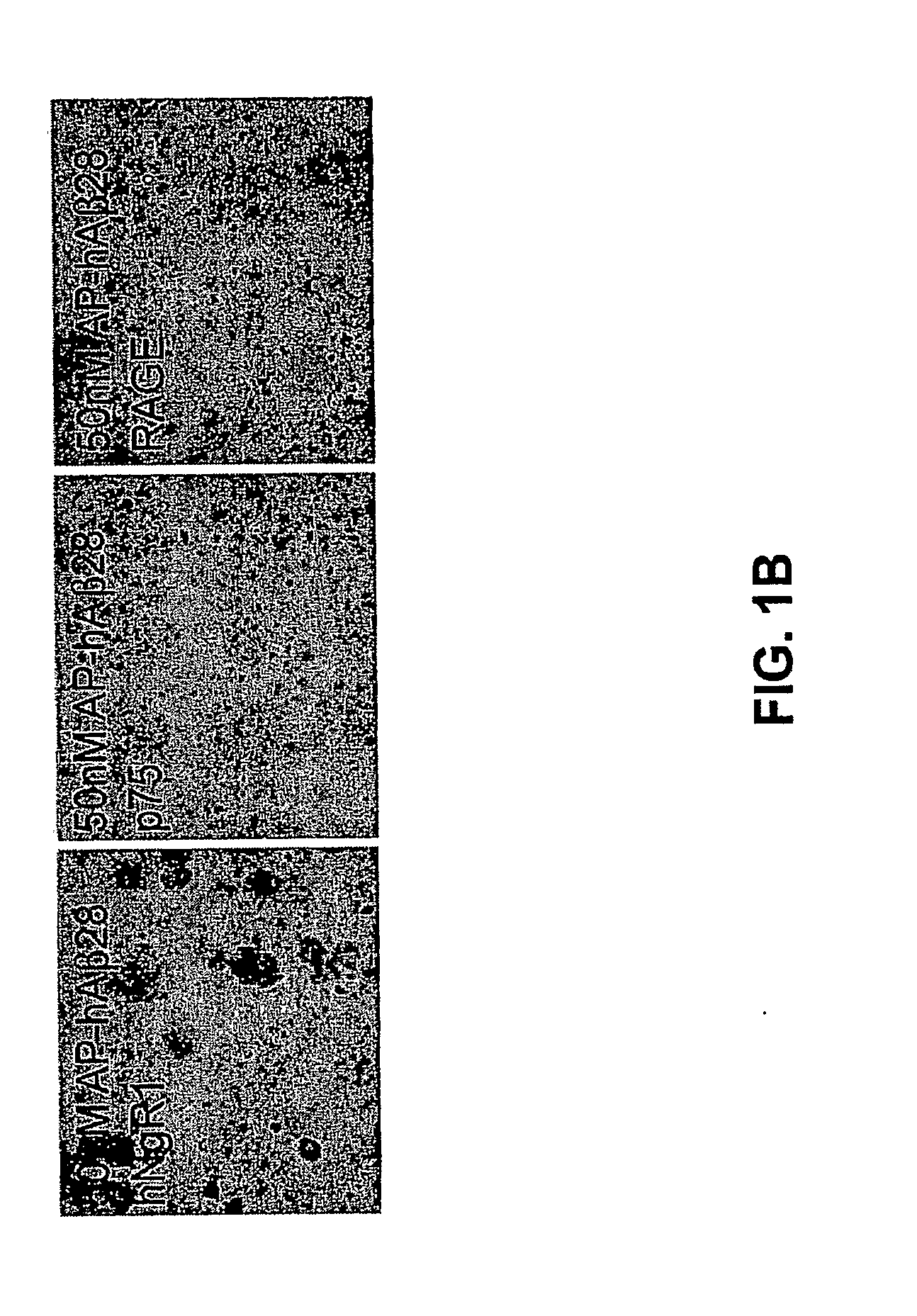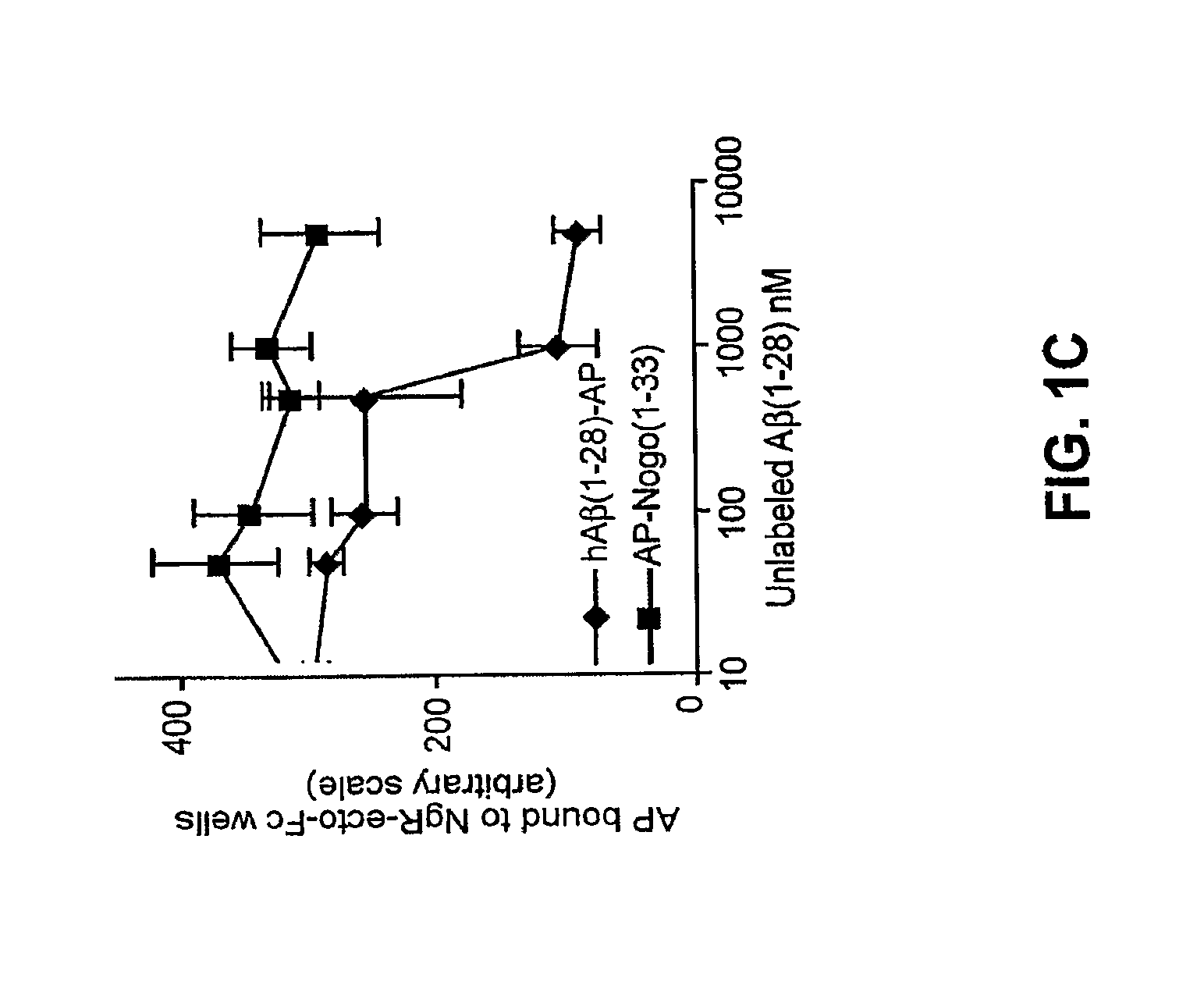Methods relating to peripheral administration of nogo receptor polypeptides
a nogo receptor and peripheral administration technology, applied in the field of neurology and pharmacology, can solve the problems of hampered efforts to treat ad, and achieve the effect of improving memory function and enhancing a clearance from the brain
- Summary
- Abstract
- Description
- Claims
- Application Information
AI Technical Summary
Benefits of technology
Problems solved by technology
Method used
Image
Examples
example 1
Residues 15-28 in Aβ(1-28) are Essential for Binding to NgR
[0233]To determine whether a linear subsegment of Aβ(1-28) might interact with full-length human NgR in a cell-binding assay, deletion constructs containing various portions of the Aβ ectodomain fused to AP were created. AP-Aβ(1-28) protein was produced by the same method as AP-Nogo-66. To generate AP-Aβ mutant constructs, Aβ fragments were amplified, ligated into the pAP5tag vector (GenHunter) and sequenced. Recoinbinant proteins were confirmed by immunoblotting. The binding of AP fusion proteins to transfected COS-7 cells has been described previously. Fournier et al., Nature 409:341-346 (2001). The region of Aβ responsible for full-length human NgR interaction localizes to residues 15-28, the central residues of Aβ 1-40 (FIG. 1a).
[0234]The binding of AP-Aβ(1-28) to NgR with that to other reported partners, p75 and RAGE was also compared. Deane et al., Nat Med 9:907-913 (2003); Yaar et al., J Clin Invest 100:2333-2340 (199...
example 2
Specific Residues in NgR Support Binding to Ap-Aβ(1-28)
[0236]In order to probe the NgR domains that interact with Aβ and Nogo-66, a strategy based on the crystal structure of NgR was employed. A number of human NgR surface-accessible residues were mutated to Ala either individually or as groups of adjacent residues (Table 3), and resultant ligand binding characteristics were assessed. The ligand concentrations were AP, 30 nM, AP-Nogo-66, 5 nM, AP-Aβ(1-28), 50 nM. NgR mutagenesis has been previously described. Hu et al., J Neurosci 25:5298-5304 (2005); Fournier et al., J Neurosci 23:1416-1423 (2003). The expression of each mutant NgR protein was verified by immunohistochemical detection at the surface of cells transfected with expression vector (FIG. 2a). Bound AP was stained and measured using NIH image software. Mutants of human NgR were detected on the surface of transfected COS-7 immunofluorescently. For each of the mutants with altered binding characteristics, expression of immu...
example 3
NgR(310)ecto-Fc Treatment Acts Peripherally to Alter the Plasma / Brain Aβ Ratio
[0238]While endogenous NgR plays a role in limiting Aβ production and deposition, the affinity of NgR for the central domain of Aβ suggests that it might promote peripheral clearance if delivered outside of the CNS. To examine whether rat NgR(310)ecto-Fc administered subcutaneously enters the brain of mouse, the presence of NgR(310)ecto-Fc in brain lysates was assayed. The NgR(310)ecto-Fc fusion protein or control rat IG was concentrated by protein A / G affinity chromatography. To administer rat NgR(310)ecto-Fc protein, APPswe / presenilin-1 (Psen-1)ΔE9 mice (Park et al., J Neurosci 26:1386-1395 (2006)) from Jackson Laboratories (Bar Harbor, Me.) (Stock #04462) were anesthetized with isoflurane and oxygen and an ALZET osmotic pump 2004 was subcutaneously inserted over the scapula and allowed to rest between fascia. The pump delivered 0.25 μl / hr for 28 days of a 1.2 μg / μl solution of rat NgR(310)ecto-Fc or rat...
PUM
| Property | Measurement | Unit |
|---|---|---|
| molecular weight | aaaaa | aaaaa |
| molecular weight | aaaaa | aaaaa |
| molecular weight | aaaaa | aaaaa |
Abstract
Description
Claims
Application Information
 Login to View More
Login to View More - R&D
- Intellectual Property
- Life Sciences
- Materials
- Tech Scout
- Unparalleled Data Quality
- Higher Quality Content
- 60% Fewer Hallucinations
Browse by: Latest US Patents, China's latest patents, Technical Efficacy Thesaurus, Application Domain, Technology Topic, Popular Technical Reports.
© 2025 PatSnap. All rights reserved.Legal|Privacy policy|Modern Slavery Act Transparency Statement|Sitemap|About US| Contact US: help@patsnap.com



